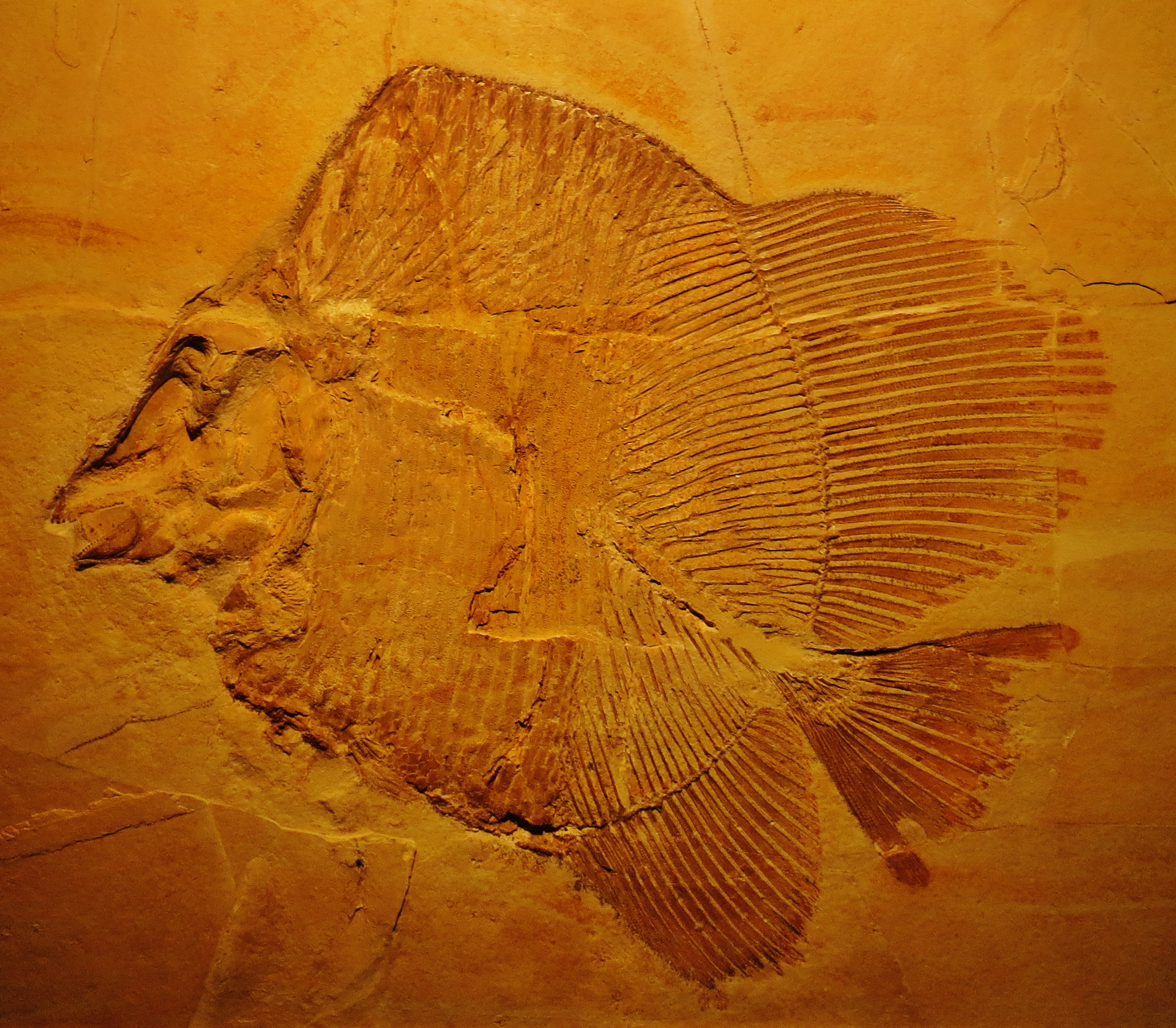|
Congopycnodus
''Congopycnodus'' is an extinct genus of freshwater Pycnodontiformes, pycnodontiform fish from the ?Late Jurassic (Kimmeridgian) of the Democratic Republic of the Congo. It is known from parts of the skull and its distinct nuchal horn that sits atop its head. ''Congopycnodus'' is among the earliest non-European pycnodontiforms and may have evolved from ancestors that traveled along the coast of Gondwana before journeying further inland. It is a monotypic genus, meaning it contains only a single species, ''Congopycnodus cornutus''. Its attribution to the pycnodonts has been disputed. History and naming ''Congopycnodus'' was described on the basis of skull fragments and nuchal horns discovered in the Jurassic Stanleyville Formation near Kisangani, in the Democratic Republic of the Congo. The holotype, which preserves the top of the skull behind the eyes, was discovered in the Stanleyville Otraco locality, while the three additional paratype specimens, all of which consisting of horn ... [...More Info...] [...Related Items...] OR: [Wikipedia] [Google] [Baidu] |
Pycnodontiformes
Pycnodontiformes is an extinct order of primarily marine bony fish. The group first appeared during the Late Triassic and disappeared during the Eocene. The group has been found in rock formations in Africa, Asia, Europe, North and South America. They were small to middle-sized fish, generally with laterally-compressed deep bodies, some with almost circular outlines, adapted for manuverability in reef-like environments, though the group was morphologically diverse. Most, but not all members of the groups had jaws with round and flattened teeth, well adapted to crush food items (durophagy), such as echinoderms, crustaceans and molluscs. Some pycnodontiformes developed piranha like teeth used for eating flesh. Most species inhabited shallow marine reef environments, while a handful of species lived in freshwater or brackish conditions. While rare during the Triassic and Early-Middle Jurassic, Pycnodontiformes became abundant and diverse during the Late Jurassic, exhibiting a high ... [...More Info...] [...Related Items...] OR: [Wikipedia] [Google] [Baidu] |
Kimmeridgian
In the geologic timescale, the Kimmeridgian is an age in the Late Jurassic Epoch and a stage in the Upper Jurassic Series. It spans the time between 154.8 ±0.8 Ma and 149.2 ±0.7 Ma (million years ago). The Kimmeridgian follows the Oxfordian and precedes the Tithonian. Stratigraphic definition The Kimmeridgian Stage takes its name from the village of Kimmeridge on the Dorset coast, England. The name was introduced into the literature by French geologist Alcide d'Orbigny in 1842, although it seems to have been first suggested by Thomas Webster in 1812. The Kimmeridge Clay Formation takes its name from the same type location (although this formation extends from the Kimmeridgian stage of the Upper Jurassic into the Lower Cretaceous). It is the source for about 95% of the petroleum in the North Sea. Historically, the term Kimmeridgian has been used in two different ways. The base of the interval is the same but the top was defined by British stratigraphers as the base of the ... [...More Info...] [...Related Items...] OR: [Wikipedia] [Google] [Baidu] |
Hybodus
''Hybodus'' (from , 'crooked' and 'tooth') is an extinct genus of Hybodontiformes, hybodont. Species closely related to the type species ''Hybodus reticulatus'' lived during the Early Jurassic epoch. Numerous species have been assigned to ''Hybodus'' spanning a large period of time, and it is currently considered a wastebasket taxon that is 'broadly polyphyletic' and requires reexamination. Description ''Hybodus'' species typically grew to about in length, with larger specimens of ''H. hauffianus'' reaching about . It possessed a streamlined body shape similar to modern sharks, with two similarly sized dorsal fins. As in other Hybodontiformes, dentinous fin spines were present on the dorsal fins of ''Hybodus,'' which in this genus exhibit a rib-like ornamentation located towards the tip of the spine, with rows of hooked Denticle (tooth feature), denticles present on the posterior side. The males possessed claspers, specialized organs that directly insert sperm into the female, ... [...More Info...] [...Related Items...] OR: [Wikipedia] [Google] [Baidu] |
Fossils Of The Democratic Republic Of The Congo
A fossil (from Classical Latin , ) is any preserved remains, impression, or trace of any once-living thing from a past geological age. Examples include bones, shells, exoskeletons, stone imprints of animals or microbes, objects preserved in amber, hair, petrified wood and DNA remnants. The totality of fossils is known as the ''fossil record''. Though the fossil record is incomplete, numerous studies have demonstrated that there is enough information available to give a good understanding of the pattern of diversification of life on Earth. In addition, the record can predict and fill gaps such as the discovery of ''Tiktaalik'' in the arctic of Canada. Paleontology includes the study of fossils: their age, method of formation, and evolutionary significance. Specimens are sometimes considered to be fossils if they are over 10,000 years old. The oldest fossils are around 3.48 billion years to 4.1 billion years old. Early edition, published online before print. The ob ... [...More Info...] [...Related Items...] OR: [Wikipedia] [Google] [Baidu] |


